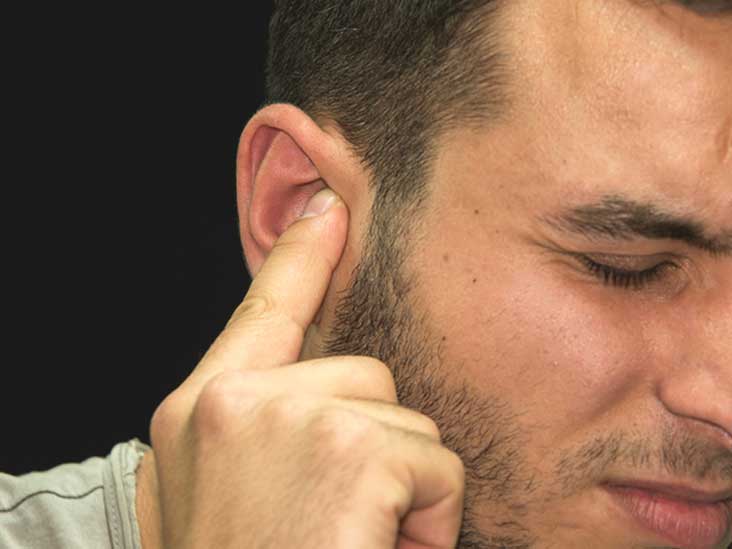Table of Content
Because the ears and nose are connected through tubes, a nasal spray is an effective way to treat Eustachian tube blockage. Angle the nasal spray bottle through the nostril toward the back of the throat, almost perpendicular to the face. If your problem is really severe, your doctor may recommend you a surgical treatment to allow free flow of the air come into your middle ear. A small incision will be made in your eardrum during the surgery so that fluid can be drained and pressure can be released.
This article will explain the causes of the condition as well as some recommended remedies to relieve the symptoms. This is because their eustachian tubes are smaller, which increases the chance that mucus and germs will become trapped. They also have more frequent colds and are more prone to infections because their immune systems are still developing. In some cases, surgery can be helpful for patients that have severe pain and need relief fast, or for those with chronic symptoms that want lasting relief. Procedures are usually a great option for when over-the-counter medications and at-home remedies just aren’t providing you with the relief you need.
What You Should Know About Eustachian Tube Dysfunction
This shows the results of a hearing test, or a tympanogram, which shows the function of the eardrum. In this procedure, a small incision is made into the eardrum and any fluid inside can be suctioned out. If you swallow, yawn or chew gum, air would flow in and out of the Eustachian tube. Theses are generally good things to try if you feel ear pain when you are in a plane and descending to land.
If you are having ear pain or pressure, you may be able to relieve it by unclogging your Eustachian tube. Close your mouth and pinch your nostrils shut, then gently try to blow air through your closed nostrils. Alternatively, drinking and swallowing water can also help relieve the pressure. The eustachian tube runs from the middle ear to the back of the nose and throat. It helps drain fluid from the middle ear, which is the space behind the eardrum.
How we reviewed this article:
If an ear infection develops with an effusion , fluid can become trapped in the ear and cause mild hearing loss. Ear infections are caused by either bacteria or viruses that travel through the eustachian tube and into the middle ear. They typically develop following a cold or respiratory infection. Although rare, malignant tumors in the back of the nose or nasopharynx can obstruct the eustachian tube. For this reason, anyone with persistent eustachian tube dysfunction should see a medical professional. Children have smaller, less rigid, and more horizontal eustachian tubes, whereas adults have more rigid and vertical ones.

Let’s explore different treatment options for how to fix Eustachian tube dysfunction. The temporomandibular joint connects the lower jaw to the skull. There is one on both sides of the head, in front of the ears.
Our Doctors & Authors
For example, if you are flying on an airplane, scuba diving, or driving through the mountains, then you can feel a difference in pressure within the ears. Medical News Today has strict sourcing guidelines and draws only from peer-reviewed studies, academic research institutions, and medical journals and associations. You can learn more about how we ensure our content is accurate and current by reading our editorial policy.

Children are also at higher risk of ETD, as their eustachian tubes are smaller and orient more horizontally than vertically. This makes the tubes more likely to become clogged by mucus or germs. Sinus infections can also trigger ETD, as a sinus infection causes the eustachian tubes to become inflamed or filled with mucus.
Causes of Eustachian Tube Pain and Treatment Options
The cause is a quick change in altitude and pressure. When this happens, and the eustachian tube does not ventilate properly, a dysfunction occurs. Any of these conditions can lead to dysfunction that causes hearing loss. Children with symptoms of ETD should receive medical help sooner, as the symptoms of ETD are similar to an ear infection. When they are blocked, symptoms can include pain, popping sounds in the ears, or fluid in the ears. On any matter relating to your health or well-being, please check with an appropriate health professional.

Your doctor will then gently inflate the balloon, allowing pressure to release and drainage to clear and eliminating your pain. Unlike with a myringotomy or the insertion of tubes, the procedure does not involve incisions that close up over time. A nasal obstruction always warrants a visit to a medical professional.
Healthy eardrums are pinkish-gray and somewhat translucent, while an infected ear will show a red, swollen, and inflamed eardrum. The healthcare provider will begin with a physical examination to see how your jaw opens and closes and what symptoms you have with the jaw movements. Eustachian tube pain will be a factor in the diagnosis too, because it is highly common in people with TMD. Eustachian tube dysfunction is a condition that develops because of issues with pressure regulation in the ear. Pressure changes can occur when your ears become clogged with fluid or mucus.

Put a towel over your head and inhale over the hot water. The trick is to inhale through your nose very slowly so that you don't close off the opening to the Eustachian tube. Staying well hydrated with quality liquids can help keep mucous thin and easier to drain. This can allow fluid in the eustachian tubes to drain.
The air can't get in through the eardrum as this is a complete seal, so it gets in from the back of the nose when the Eustachian tube opens. Climate will not affect or reduce the problem of a blocked eustachian tube. If your blockage progresses to that level, contact a medical professional for a prescription for antibiotics. Your doctor may not prescribe them unless you also have a fever of 102.2°F (39°C) or higher for 48 hours.Follow dosage instructions for antibiotics precisely.

No comments:
Post a Comment